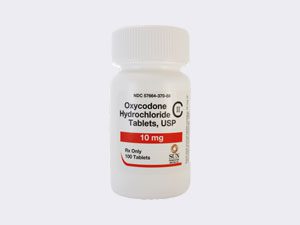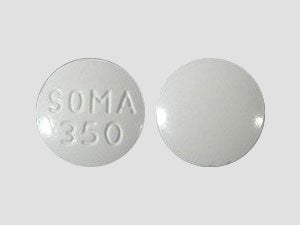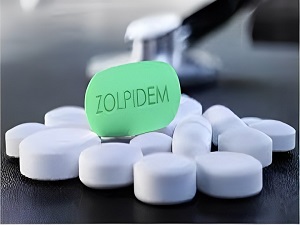How Ambien tablet is good enough for sleeping disorder problem ?
In the realm of sleep disorders, Ambien (Zolpidem) emerges as a reliable ally, offering respite to those battling insomnia and related sleep disturbances. Let’s delve into the wonders of Ambien and how it aids in restoring restful sleep and improving overall well-being.
Understanding Sleep Disorders
Sleep disorders encompass a range of conditions that disrupt normal sleep patterns, leading to difficulties falling asleep, staying asleep, or experiencing restorative sleep. Common sleep disorders include insomnia, sleep apnea, restless legs syndrome (RLS), and narcolepsy, among others. These disorders can significantly impact daily functioning, cognitive performance, mood, and overall quality of life.
The Role of Ambien (Zolpidem)
Ambien, a medication belonging to the class of sedative-hypnotics, is primarily used to treat insomnia and promote sleep initiation. Its mechanism of action involves enhancing the activity of gamma-aminobutyric acid (GABA), a neurotransmitter that inhibits brain activity, induces relaxation, and facilitates sleep. Here are the key benefits of Ambien in managing sleep disorders:-
Improved Sleep Onset:
- Ambien helps individuals fall asleep faster by calming the mind and reducing pre-sleep anxiety.
- Its rapid onset of action allows for quicker transition into sleep, promoting a seamless sleep initiation process.
Extended Sleep Duration:
- Ambien aids in maintaining sleep continuity, reducing nighttime awakenings, and prolonging total sleep time.
- By enhancing sleep quality and depth, Ambien contributes to a more restorative and refreshing sleep experience.
Reduced Sleep Latency:
- Sleep latency, the time it takes to fall asleep after going to bed, is significantly reduced with Ambien use.
- This reduction in sleep onset latency translates to less time spent tossing and turning in bed, leading to more efficient sleep.
Non-Habit Forming:
- Unlike some older sedatives, Ambien is less likely to cause physical dependence or addiction when used as prescribed.
- Its short-term use for acute insomnia or intermittent sleep disturbances minimizes the risk of long-term dependency.
Minimal Daytime Impairment:
- Ambien’s short half-life and rapid metabolism result in reduced residual effects the next day, leading to minimal daytime drowsiness or impairment.
- Individuals can wake up feeling refreshed, alert, and ready to tackle the day’s activities without lingering sedative effects.
Flexible Dosage Options:
- Ambien is available in various formulations, including immediate-release (Ambien) and extended-release (Ambien CR), catering to individual sleep needs.
- Healthcare providers can tailor dosage and administration based on specific sleep disorder presentations and treatment goals.
Effective for Insomnia Variants:
- Ambien is effective in managing different types of insomnia, including difficulty falling asleep (sleep-onset insomnia) and difficulty staying asleep (sleep-maintenance insomnia).
- Its versatility makes it a suitable option for addressing insomnia variants and promoting overall sleep quality.
Adjunct to Sleep Hygiene Practices:
- Ambien complements sleep hygiene practices, such as maintaining a regular sleep schedule, creating a comfortable sleep environment, and avoiding stimulants before bedtime.
- Incorporating Ambien into a comprehensive sleep management plan enhances the efficacy of overall sleep interventions.
Well-Tolerated Profile:
- Ambien is generally well-tolerated, with common side effects such as drowsiness, headache, and dizziness typically resolving with continued use.
- Serious adverse effects are rare but may include allergic reactions, complex sleep behaviors, or memory impairment in susceptible individuals.
Patient-Centered Approach:
- Healthcare providers take a patient-centered approach when prescribing Ambien, considering individual factors such as medical history, coexisting conditions, medication interactions, and lifestyle factors.
- Collaborative decision-making ensures safe and effective use of Ambien in managing sleep disorders while addressing patient preferences and concerns.
Factors that affect the Ambien tablet
Several factors can influence the effectiveness and safety of Ambien (Zolpidem) tablets in managing sleep disorders:-
- Dosage and Timing: Taking the prescribed dosage at the recommended time maximizes Ambien’s sleep-inducing effects while minimizing potential side effects.
- Individual Differences: Variations in metabolism, age, weight, medical history, and coexisting conditions can impact how Ambien is absorbed, metabolized, and excreted in the body.
- Drug Interactions: Concurrent use of other medications, especially central nervous system depressants or medications that affect liver enzymes, can interact with Ambien, altering its efficacy or increasing the risk of adverse effects.
- Alcohol and Substances: Consumption of alcohol or other substances that affect the central nervous system can potentiate Ambien’s sedative effects, leading to excessive drowsiness, impaired coordination, and respiratory depression.
- Sleep Environment: Factors such as noise, light, temperature, and comfort level in the sleep environment can influence how effectively Ambien promotes sleep initiation and maintenance.
- Compliance and Adherence: Adhering to the prescribed dosage, frequency, and duration of Ambien use is crucial for optimizing its benefits and minimizing the risk of tolerance, dependence, or withdrawal symptoms.
- Psychological Factors: Psychological variables like stress, anxiety, depression, and sleep hygiene practices can impact the overall response to Ambien and the management of sleep disorders.
Considering these factors and maintaining open communication with healthcare providers can enhance the safe and effective use of Ambien in addressing sleep disturbances while promoting overall well-being.
Conclusion
In conclusion, buy Ambien online that stands as a valuable asset in the arsenal against sleep disorders, offering a range of benefits that promote restful and rejuvenating sleep. Its efficacy in improving sleep onset, duration, and quality makes it a trusted ally for individuals grappling with insomnia and related sleep disturbances. When used judiciously and in conjunction with sleep hygiene practices, Ambien can pave the way for restorative sleep, enhanced well-being, and improved daytime functioning. Consulting with a healthcare provider for personalized evaluation and guidance ensures safe and optimal use of Ambien in managing sleep disorders, leading to a healthier and more balanced sleep-wake cycle.














